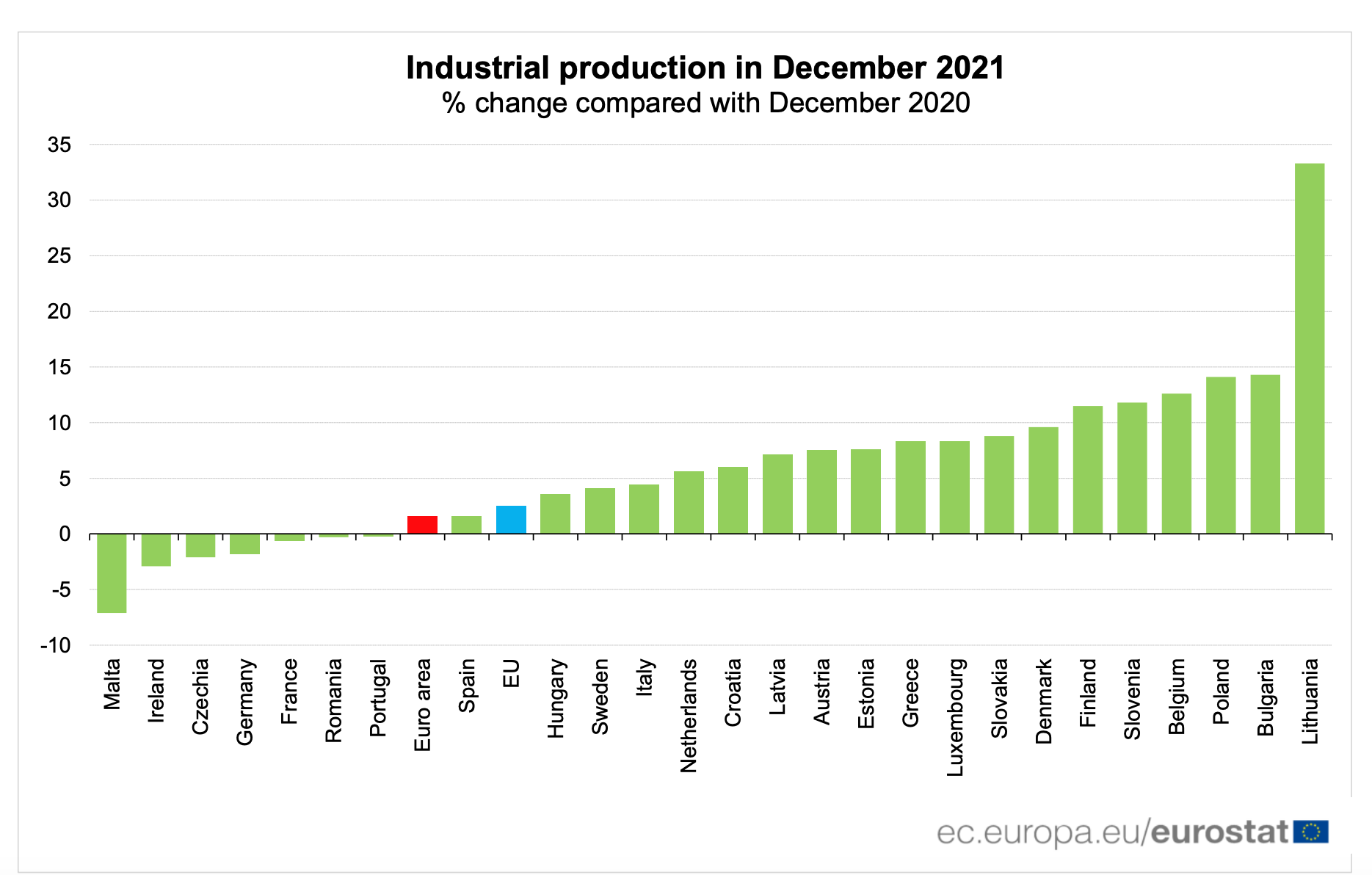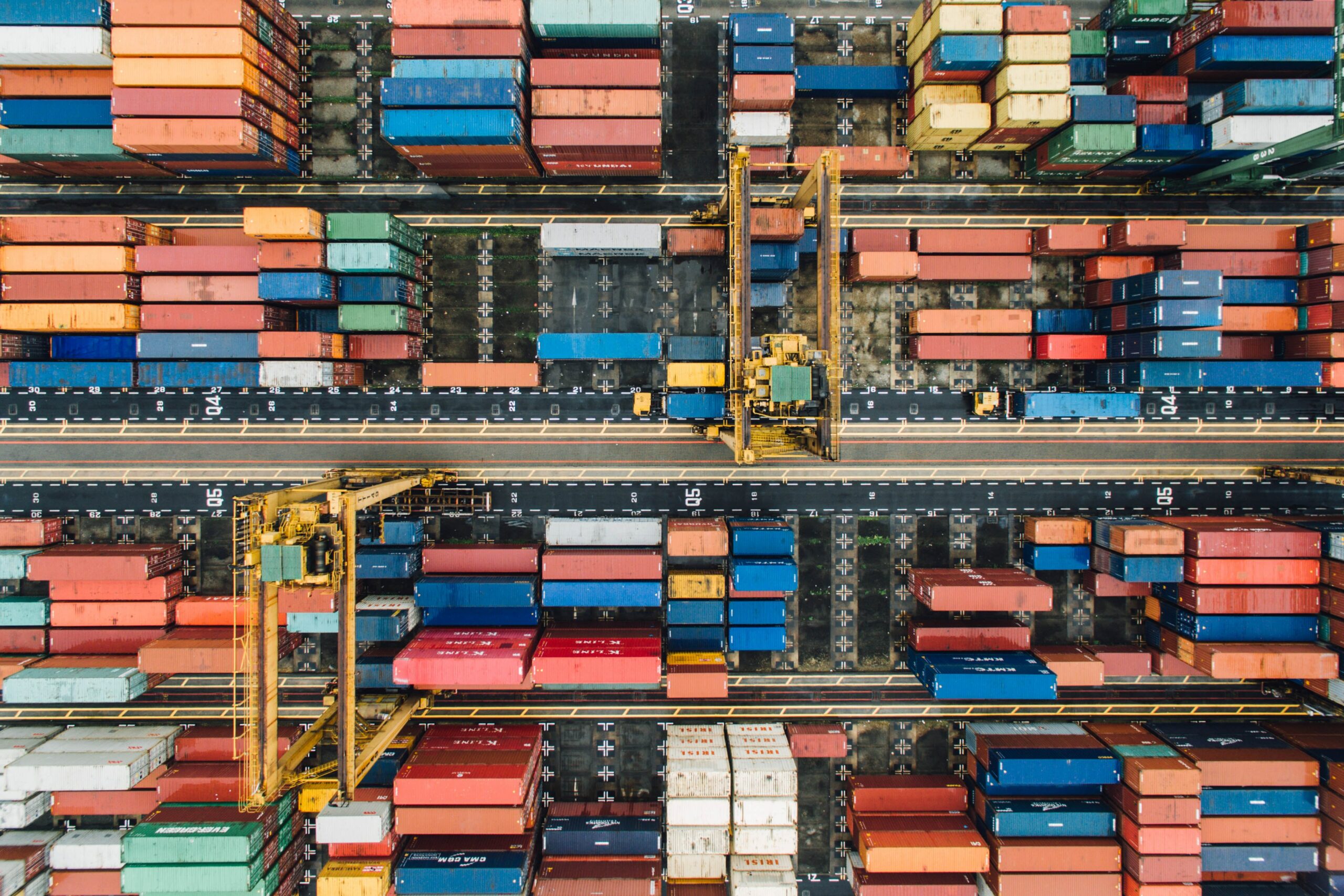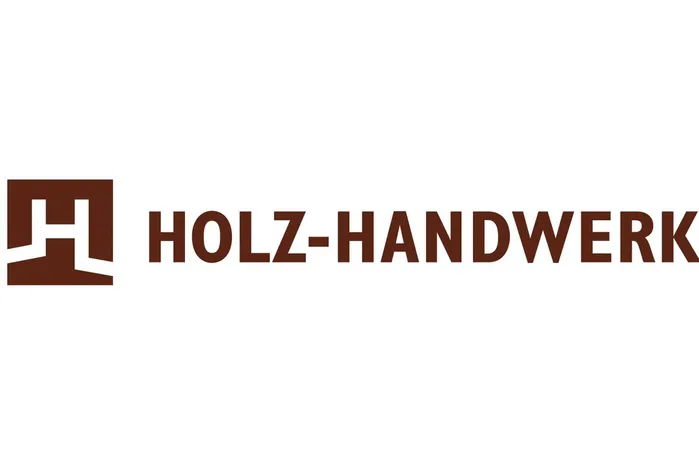Despite global supply-chain constraints and rising of the raw material costs, the industrial production in December 2021 rose by 1.2%, in the euro area and by 0,7% in the EU, compared with November 2021, according to Eurostat statistics1. On annual basis, the output remained positive showing an increase of the industrial production in December 2021 by 1.6% in the euro area and by 2.5% in the EU, compared to December 2020.

With regard to the production of capital goods, in December 2021, it was registered an increase by 2.6% in the euro area and by 1.8% in the EU, compared with November 2021. On annual basis, the production of capital goods fell by 1.0% in the euro area and by 0,8% in the EU, compared to December 2020.
As 2022 starts, the euro area manufacturing economy showed initial signs that the situation is starting to improve, following unprecedented 2021 supply chain systems disruption. But the sector is not yet out of the wood: supply bottlenecks, delivery delays, price hikes and Covid-19 related uncertainty will continue to strain the economic activities into 2022. Added to this, there are the high energy costs associated with the crude oil, coal and natural gas that are likely dampen spending.
As a direct consequence, higher energy costs have pushed up prices of goods and services, including food prices, leading to a sharp rise in inflation in recent months. Indeed, inflation in the euro area increased to 5.1% in January 2022, from 5.0% in December 2021, according to ECB data, and it is likely to remain high in the near term. However, economy is affected less and less by each wave of pandemic and the growth in the euro area should rebound strongly over the course of 2022, driven by robust domestic demand2.
1 Eurostat, “Euroindicators 22/2022 – 16 February, 2022“
2 European Central Bank, “Economic Bulletin Issue 1, 2022”



